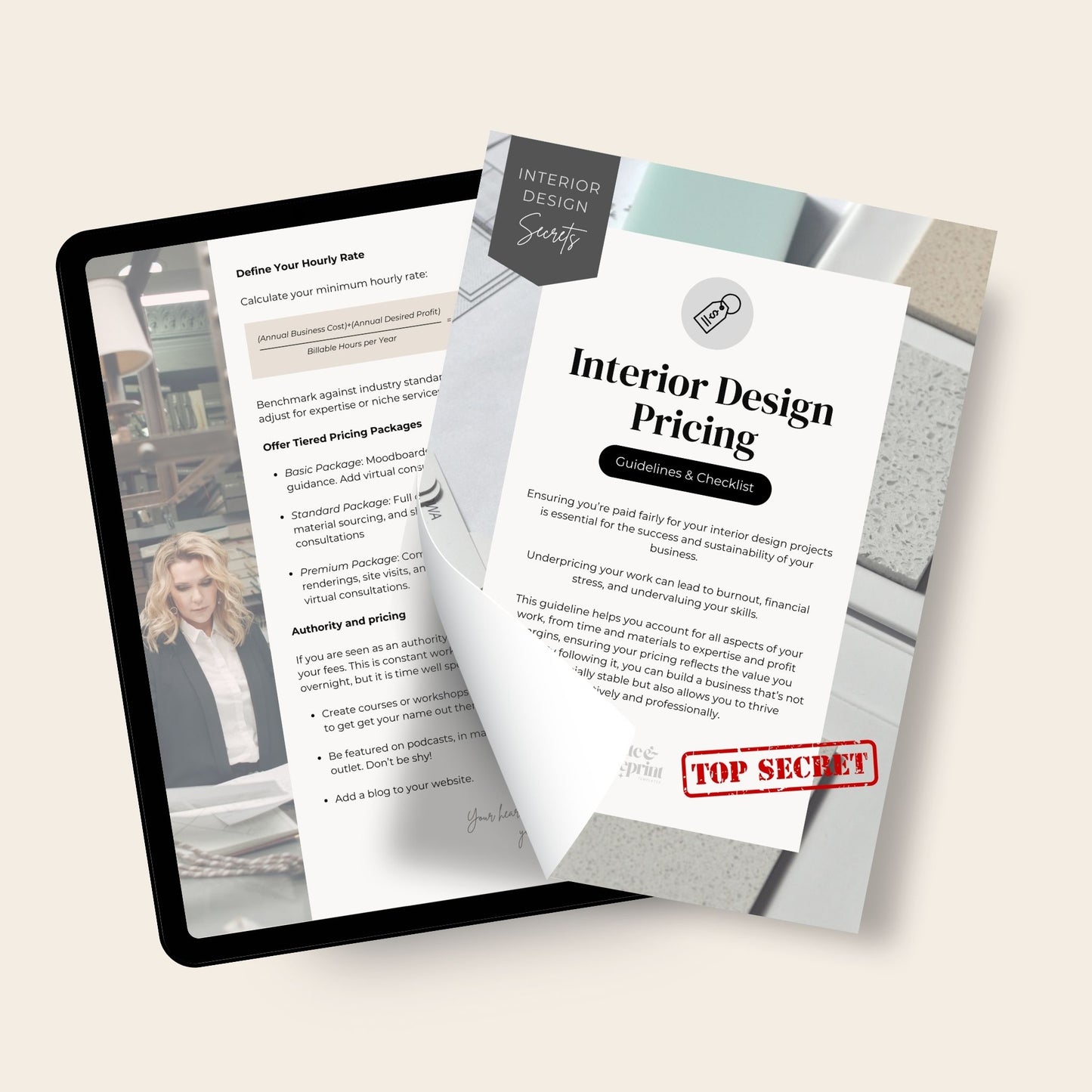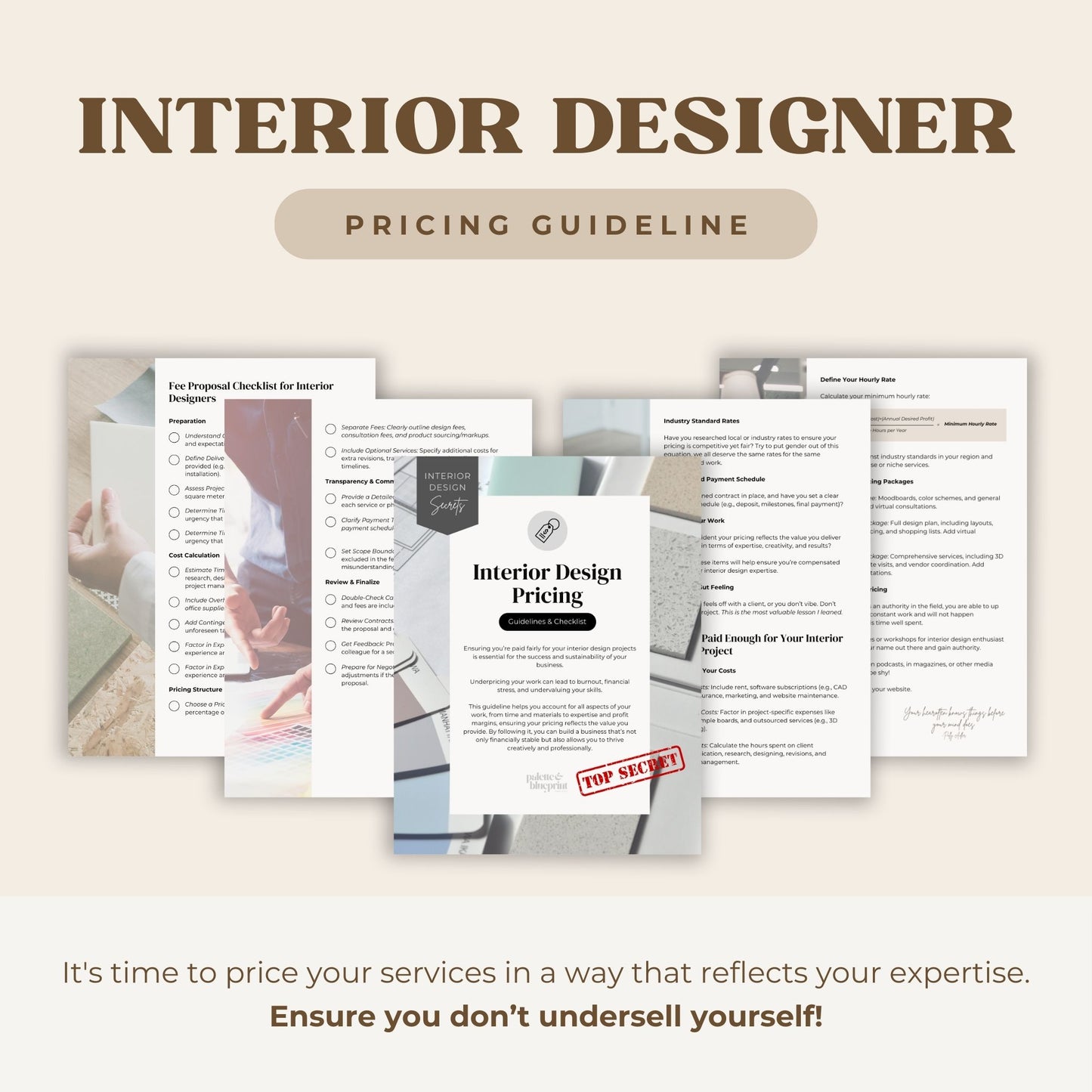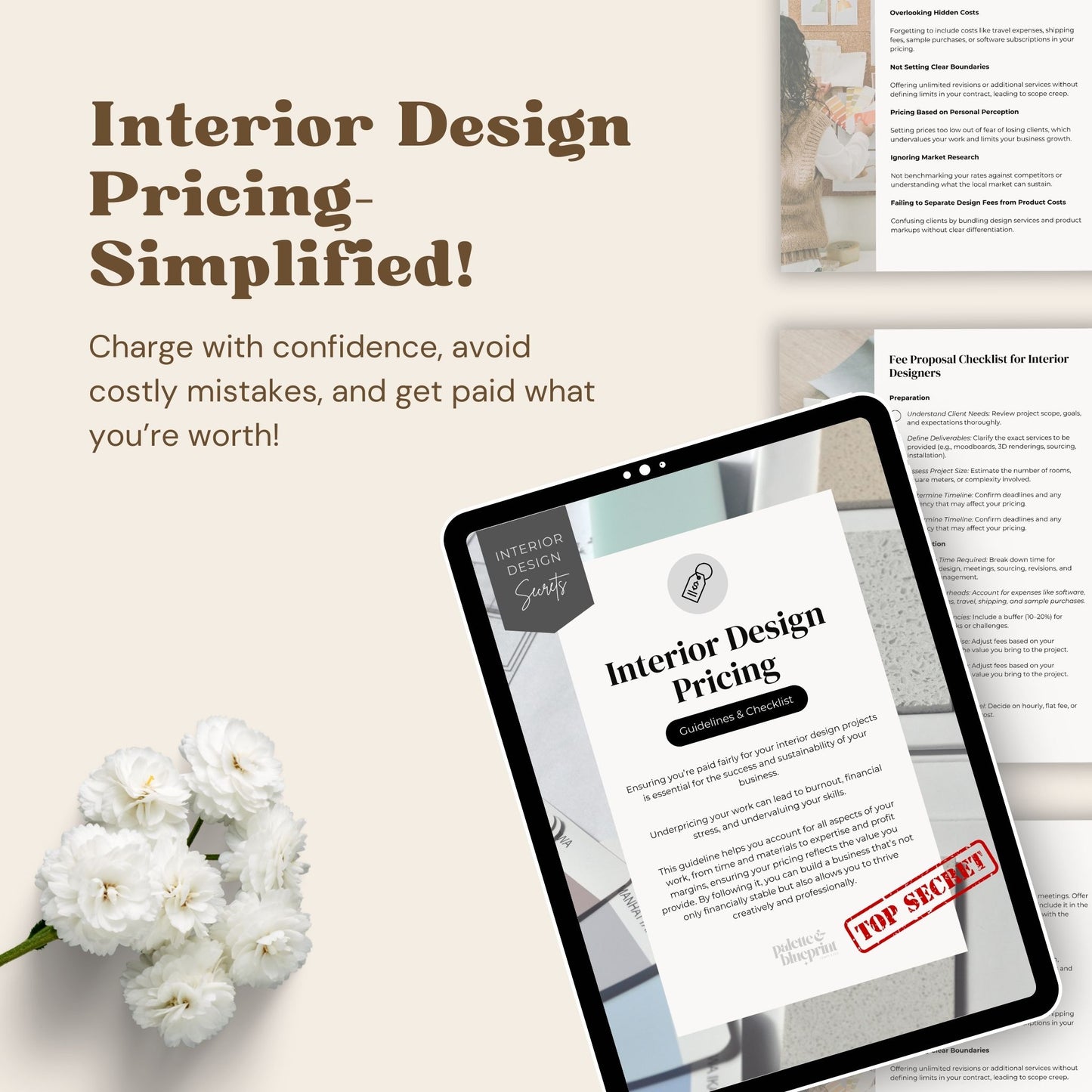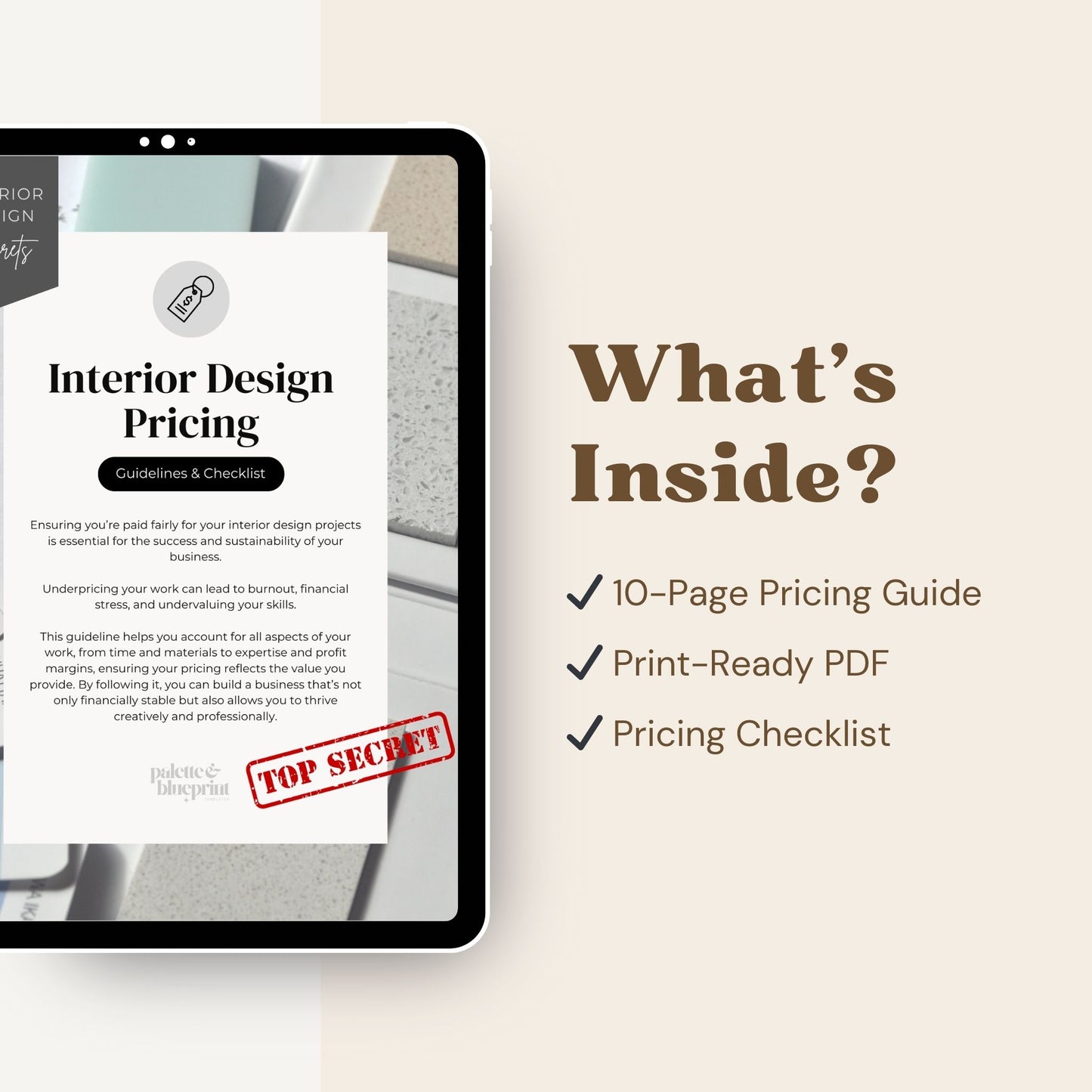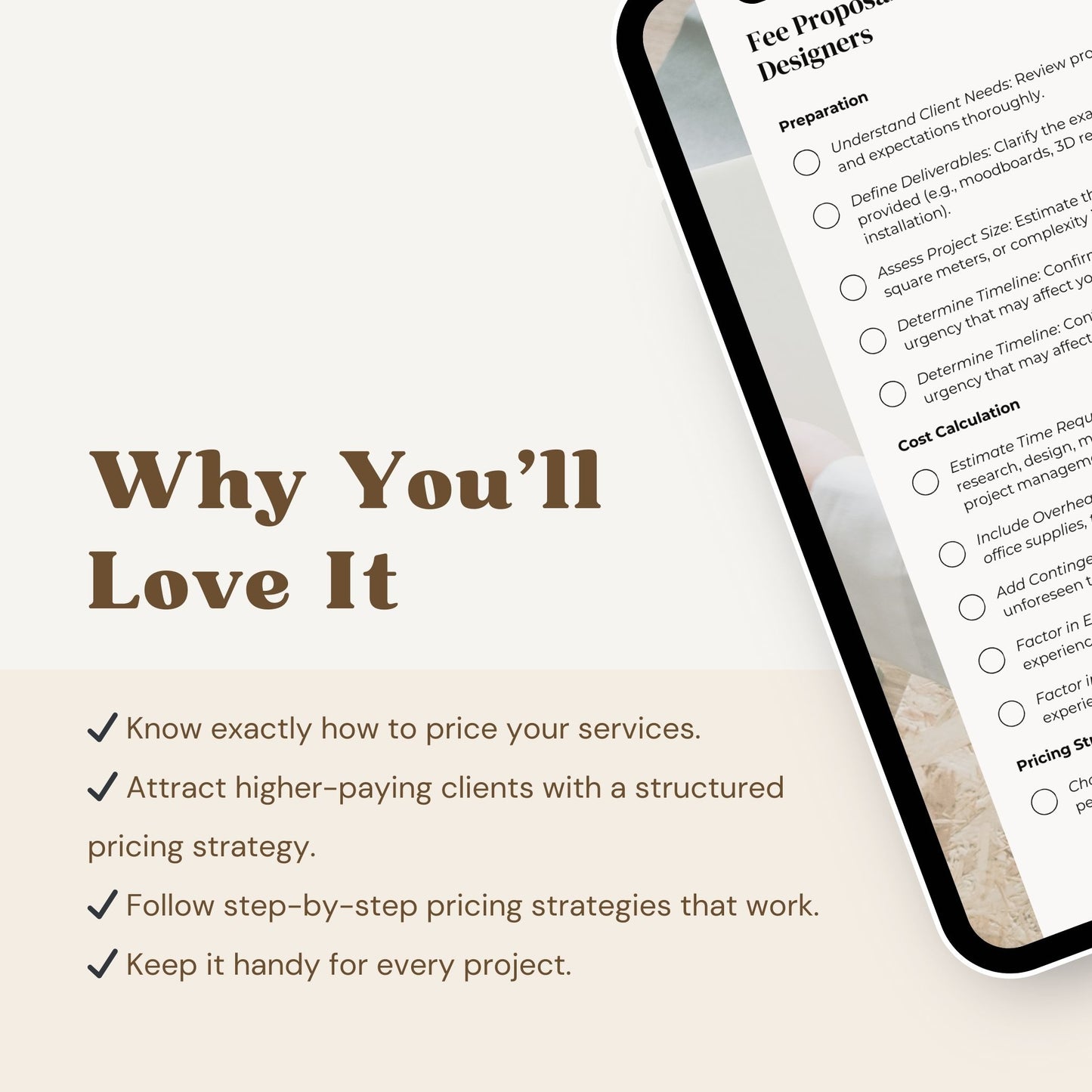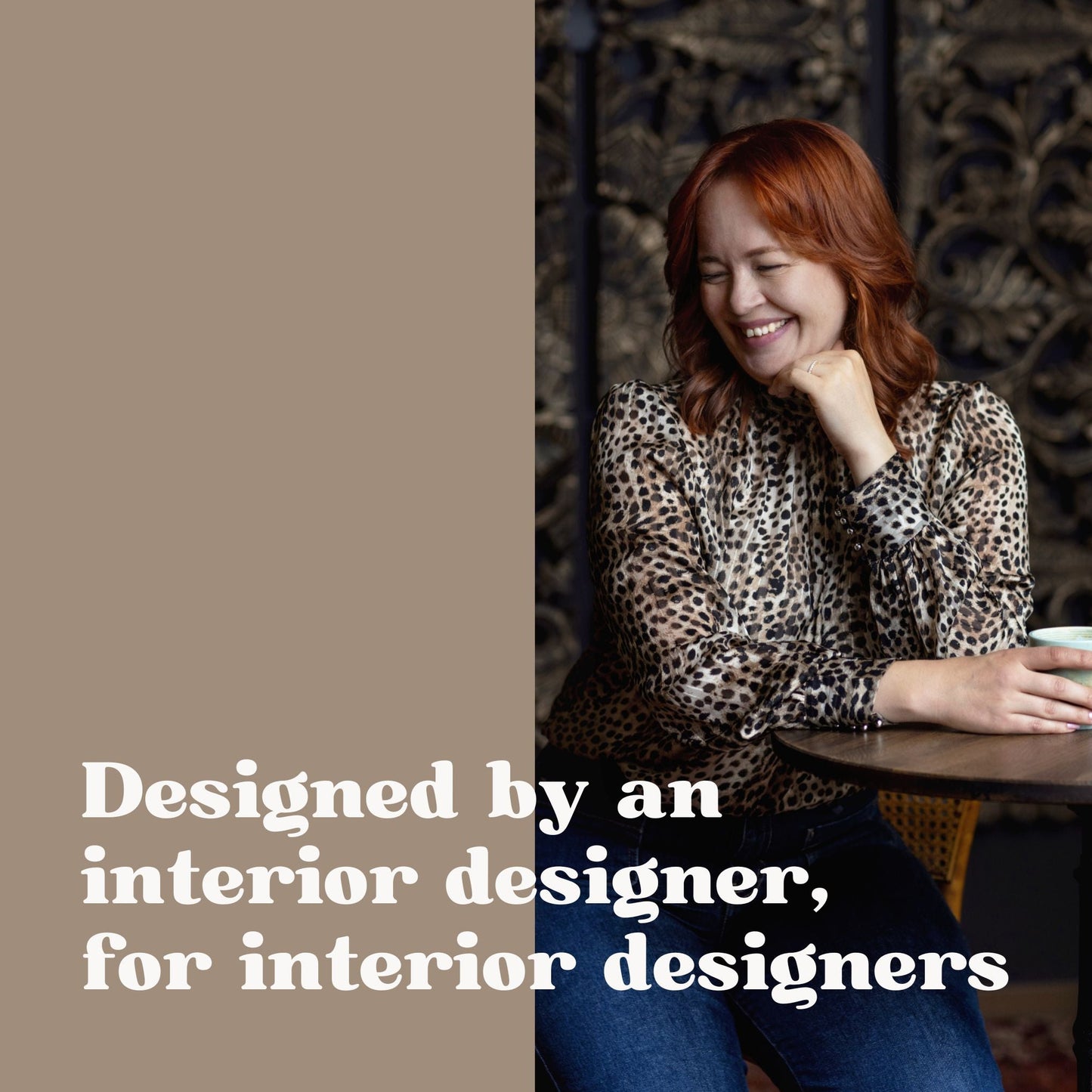
How to Charge for Interior Design
Share
Pricing your interior design services can feel like walking a tightrope. You want to be fair, competitive, and profitable—but at the same time, you don’t want to scare away potential clients. If you’ve ever second-guessed your rates or worried about pricing yourself out of the market, you’re not alone. This article is all about how to charge for interior design.
Understanding Your Value
Before we get into numbers, take a deep breath and remind yourself: Your skills, creativity, and expertise have real value.
The time and effort you put into learning about design, sourcing materials, handling client needs, and ensuring every detail is perfect all count. You deserve to be able to live off your work.
This is not a hobby, even if many consider it somewhat in that area. It is a profession. Think of photographers and all smartphones. My guess is they are facing the same issues as well.
Remember, you’re not just picking out pretty colors—you’re solving problems, creating functional spaces, and improving lives. Hobbyists make cozy spaces; interior designers design functional spaces to enhance the quality of life for those using them. It is quite a difference. I just wanted you to remember that - at all times!

Interior Design Fee Structures
Every designer has a unique way of charging for their services. Projects are different, and you might use several of these models in your business. It is essential to know what they are and how to use them.
Choosing the proper interior design fee structure makes you look like a pro. It takes a little time to learn what model to use and when, but I will give you some general guidance.
Always consult with a legal professional before entering into any contract. They might have insights into your local market that this general advice might not.
Here are the most common pricing structures:
Hourly Rate – Best for open-ended projects or consultations. Make sure you account for all hours worked, including research and communication.
Flat Fee – Great for well-defined projects. You set a clear price based on estimated time and costs.
Cost-Plus – You charge for materials at cost and add a markup (e.g., 20%) for sourcing and handling.
Package Pricing – Pre-set bundles for specific services (e.g., a design consultation package or a full-room makeover).
Retainer Model – Ideal for ongoing clients who need your expertise over time.
The key is to choose a model that works for you and communicates value clearly to your clients.
Selecting an interior design fee structure your client feels secure with makes you more likely to close the deal.
I recommend using an onboarding form to ensure you have all the information you need to decide on the pricing structure.
If you want to snatch my onboard forms, you can find them here: Onboarding form.
How to Calculate Your Hourly Rate and Ensure Profit
If you choose to charge by the hour, setting a rate that covers your expenses and allows you to make a profit is essential. Here’s a simple formula to help:
Determine Your Expenses: Add up all your annual business expenses (software, marketing, rent, office supplies, etc.).
Decide Your Desired Salary: Consider what you want to earn in a year.
Calculate Your Billable Hours: Realistically, you won’t be billing clients for all 40 hours a week. A good rule of thumb is 50-60% of your total working hours.
Use the Formula:
(Annual Expenses + Desired Salary) ÷ Billable Hours = Hourly Rate
For example:
Annual expenses: $10,000
Desired salary: $50,000
Billable hours: 1,200 (assuming 25 billable hours per week for 48 weeks)
Hourly Rate = ($10,000 + $50,000) ÷ 1,200 = $50/hour
To ensure profit, consider adding a buffer percentage (10-30%) to cover unexpected costs and growth.
Common Fears & How to Overcome Them
Fear #1: “What if clients think I’m too expensive?”
It’s natural to worry about pricing yourself out of the market. But here’s the truth: clients who appreciate your work will pay for it. If someone is only looking for the cheapest option, they are not your ideal client. You should be happy you're not stuck with them. Use an onboarding form to weed them out early on in the process.
Solution: Be clear about the value you provide. If needed, offer different pricing tiers or payment plans to make your services more accessible.
Fear #2: “I don’t feel experienced enough to charge more.”
Imposter syndrome is real, but remember—if you deliver quality work, you are worthy of fair pay.
Solution: Consider what designers with similar experience charge, and price yourself accordingly. You don’t have to be the cheapest to get hired! But remember to check that you make a profit! Some designers are really undercharging themselves!
Fear #3: “What if I lose a client because of my rates?”
Some clients may say no due to pricing. That’s okay! Having fewer, well-paying clients is better than stretching yourself too thin on underpaid projects.
Solution: Focus on attracting the right clients who see your value rather than trying to appeal to everyone.

Practical Pricing Tips: How To Price Your Interior Design Services
There are some practical tips that you need to know when pricing your interior design services. If you nail these, you have come a long way.
- Know Your Costs – Factor in all expenses: software, materials, transportation, and administrative time. I can't stress this enough.
- Set a Minimum – Avoid taking projects that don’t meet your baseline profit margin.
- Communicate Value – Explain your process so clients understand what they’re paying for.
- Regularly Review Your Prices – As your experience grows, so should your rates.
- Get Comfortable Talking About Money – Confidence in your pricing comes from practice.
Never copy and paste pricing from another interior designer or agency. Many have the calculations very wrong, which leads to working for about nothing an hour. Check that it is in line with your profit margin.
What to Do If Your Competition is Underselling Themselves
It can be frustrating to see competitors charging far less than they should. This is far more common than you might think. Instead of lowering your rates, try these approaches:
Focus on Value, Not Price – Clients who understand quality will pay for it. Show them why your expertise, attention to detail, and design process make their investment worthwhile.
Educate Clients – Some clients might not realize the difference between a budget decorator and a professional interior designer. Use social media, blog posts, or consultations to highlight what goes into your work.
Differentiate Yourself – Instead of competing on price, compete on service, expertise, or niche specialization. Offering unique solutions sets you apart. I, for example, stress the art history and architectural history I studied before becoming an interior designer. I know precisely what aligns with different eras and styles and can source artwork like a charm.
Network with Other Designers – Sometimes, low pricing comes from inexperience. Connecting with fellow designers can create a stronger industry standard and encourage fair pricing.
To make pricing more manageable, I’ve created a pricing guideline and checklist to help you confidently set rates. It includes tips, formulas, and practical steps to ensure you’re paid reasonably.
Knowledge is key to success. Don't pay yourself less than working at some burger joint. That's not why you started your biz. You want to live out of your passion and improve your life standard. Right?
Download the Pricing Guide Here
Remember, you are talented, and your work matters and the right clients will see that. Now go out there and price with confidence! 💪✨


